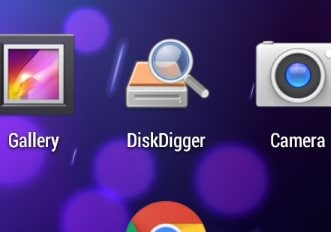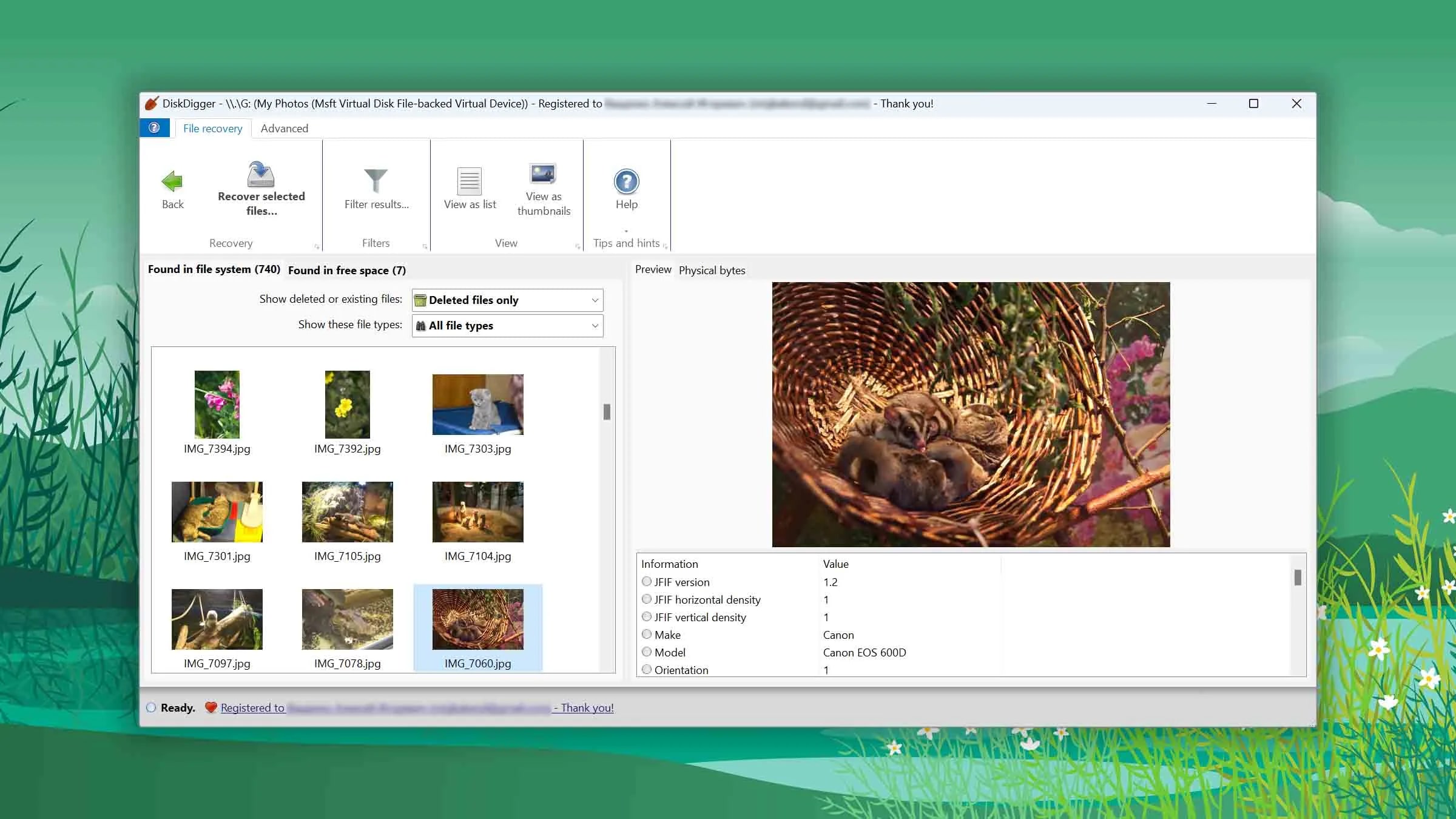DiskDigger Review: The Bottom Line
Is DiskDigger Safe? Yes, it is widely considered safe when downloaded from official sources. It performs read-only operations on your drive, minimizing risk.
Does it work? Yes, especially for photo recovery on Android and basic file recovery on Windows. The "Dig Deeper" scan is effective but can be slow.
Our Rating: 3.5/5. A solid, low-cost option with some limitations. For more advanced recovery or for Mac users, consider an alternative like Wondershare Recoverit.
Low-cost recovery tools always raise an alarm about the actual capability of software in recovering the data and whether they will work. However, this is not true when it comes to DiskDigger. DiskDigger Pro is an out-of-the-box, low-cost yet extremely powerful data recovery software, that does its part well whether it is recovering data, files, photos or videos. Let us see the tested reviews about DiskDigger Pro File Recovery and see if it actually works.
Try Wondershare Recoverit to Perform Data Recovery

What Does DiskDigger Pro Do?
Before we see in detail how the DiskDigger Pro works, let us first see its features, compatibility, pricing and others.
1. Main Feature
File Recovery is the key feature of DiskDigger Pro. It helps you recover photos, videos, music, documents, and other files from different storage devices. It supports a variety of File formats including FAT, NTFS, exFAT etc.
2. Types of Data Recovery Scans
The following are the different types of data scans possible with DiskDigger Pro:
- Basic Scan: A quick scan can be performed to check for selectively deleted files.
- Deep Scan: With this scan system you bypass the File System and perform a sector-by-sector search for any of the file types. It can also recover from corrupted or formatted storage media.
3. DiskDigger Compatibility
Operating System:
- Windows: DiskDigger Pro is compatible with all the Windows operating systems of Windows XP and later.
- Macintosh: According to the latest update from the developers, DiskDigger Pro for Mac and iOS is still in the experimental phase and is not available for the users.
- Linux: DiskDigger Pro works well with Linux.
- Android: DiskDigger Pro is now available as an Android device application and can be downloaded from Google Play Store. Simply search for DiskDigger and you will find the application.
Storage Media:
DiskDigger Pro supports a wide range of storage media both internal and external and includes Hard Drives, SD cards, Micro SD cards, USB Flash drives and even some optical drives.
File Systems:
All major file systems are supported for recovery by DiskDrill Pro such as FAT12, FAT16, FAT32, exFAT, NTFS as well as Ext2/3/4/ for Linux.
4. Save and Restore Scan Sessions
With Disk Drill Pro you can save the scan sessions, pause them and continue from where you left.
5. Additional Features of DiskDigger Pro
The following are some of the additional features available with DiskDigger Pro:
- Filtering and sorting: The files recovered using DiskDigger Pro can be filtered and sorted according to size, date, name, type etc.
- Preview: Users can preview the files before actually recovering.
- Recover to a specific location: You can decide on a specific location where you want the recovered files to be saved.
- Root access for Android devices: When installed as an application on the Android device, DiskDigger Pro can directly recover the deleted files from the internal memory.
- Ad-Free: Yes, it’s true. Unlike other free software that intrudes you with ads after every step, DiskDigger Pro is ad-free. Enjoy a seamless recovery experience with DiskDigger without any annoying ads.
6. Pricing
DiskDigger Pro is available as a one-time purchase with no recurring subscription at an approximate cost of $14.99 for Windows. The Android app is priced at approximately $2.99 depending upon the location.
7. User Feedback
Based on the various user feedback following are the Pros and Cons of DiskDigger Pro.
How Does DiskDigger Pro Undelete Work?
1. DiskDigger Data Recovery on Android Devices
Using the DiskDigger Pro application for Android is very simple. The following are the steps to use the DiskDigger for data recovery on Android Devices:
Step 1: Installing the Disk Digger app from the Google Play Store
First of all open the Google Play Store and search for the Disk Digger application. Once you find the same install it on your device. It will look something like this.

Step 2: Starting the app
Once you open the app, you can see two options: Basic scan and Full scan. However, the full scan functionality is available only on the rooted devices. If you are trying a recovery on a rooted device, the app should allow you to select the memory partition you wish to scan. It usually appears as”/data” and if it's on the memory card then it appears as “/mnt/sdcard”

Step 3: Scanning the files
Once the app starts scanning the recoverable files will start populating. You may tap on the files to select the checkboxes for recovery. You may also tap on the three-dot menu to see the available recovery options.

Step 4: Filtering files
You can press on the settings icon (Gear-like icon) to sort the recoverable files according to name, size, and file type. You may also set a minimum size of the file with which only the files greater than that size will be shown.
Step 5: Saving to an app
DiskDigger provides a variety of options to save the recoverable files which are Save to an app, Save to device and FTP upload. Check on all the files that you wish to recover and then click on Recover.

2. Disk Digger Pro File Recovery on Windows PC
The following is a walkthrough to understand how the DiskDigger software actually works on Windows:
Step 1: Installation
Installing the DiskDigger software on PC. Simply visit their official website and click on Download. The software will be automatically downloaded to your system in a Zipped folder. Extract the zip in a suitable location, open the file and click on agree to the terms of use to install the software in your system.

Step 2: Source selection
Once you open the DiskDigger software, a list of drives will open up. Select the source drive which you want to scan. If you connected your external drive to your PC while your DiskDigger is already open click on Refresh list to read that drive. Click on Next.

Step 3: Scanning
Once done you need to select the type of files that you need to scan. You can either choose All types of files or Specific types of files. Also, choose the scan method and click on Next.

Step 4: Managing the files found
As the scanning continues the found files will be populated. Here you can filter the recoverable files according to size, file type etc. You can also switch between the list view and the thumbnail view. Select the files that you wish to recover by checking them and clicking on Recover selected files.

Step 5: Recovery and post-processing
To complete the recovery process you need to select the folder where the recovered files need to be saved. Once finished the output location will automatically open in the File Explorer where you will be able to view the recovered files.

Our Top Pick Alternative to Disk Digger: Wondershare Recoverit

DiskDigger is undoubtedly the best software for file recovery. If however, you are looking for an equivalent software then you must give a try to Wondershare Recoverit.
With a success rate of 99.5%, Recoverit can completely recover deleted files, videos, photos, and other 1000+ file formats from 2000+ storage devices. Besides, it is available for both Mac and Windows. So, if you are a Mac user then DiskDigger is not available for you and the next best alternative is Recoverit only.
Let us explore in detail how Recoverit works and how can you recover data using Recoverit software.
Step 1: Download and Install:
First, simplify the installation process for Recoverit on ThinkPad by downloading it from the internet. Visit the link above and click on Download to automatically begin the downloading of the software.
Step 2: Select Recovery Mode:
Select the correct mode depending on your data loss situation (e.g., missing files, lost Drive, unbootable System).

Step 3: Scan Your Drive:
Choose the Drive containing your lost data and then begin the scan.

Step 4: Preview and Recover:
Preview the recovered files and select the ones you want to restore. Click "Recover" to save them to a safe location.

DiskDigger vs. Wondershare Recoverit: Which is Better for You?
| Feature | DiskDigger Pro | Wondershare Recoverit |
|---|---|---|
| Best For | Basic photo/file recovery, Android users, budget-conscious users | Complex scenarios, corrupted video repair, Mac users, highest success rate |
| Pricing | $14.99 (One-time) | Subscription-based (Offers more features & support) |
| Mac Support | No (Experimental only) | Yes, fully supported |
| Corrupted Video Repair | No | Yes, advanced feature |
| User Interface | Simple, somewhat dated | Modern, intuitive, guided |
Tips & Notes for Data Protection
Following are some of the tips that can save you from the hassle of recovery and the tension of losing the data.
- Regular Backups: Backing up the data regularly must be a part of your daily routine and should be a habit.
- Multiple Backups: Never trust a single backup and make a habit of taking multiple backups. For example, if you take a backup daily, you must also take an additional backup to a different location fortnightly.
- Backup Schedule: To back up your data, it is recommended to schedule data backup activities at a daily, weekly, or monthly backup frequency, depending on the frequency of your data update.
- Cloud Storage: Using cloud storage is recommended as that will save a lot of storage space physically and recovery of the data will become handy.
- Test Your Backups: Occasionally perform a file retrieval from your backups so you can test the file functionalities or in case of file loss.
Conclusion
DiskDigger Pro is one of the finest ad-free software for the recovery of data with a huge success rate. However, you should have regular backups so that you are not dependent upon the recovery system and your data is safe. Besides, if you are a Mac user then consider using Recoverit as DiskDigger is still not available.
FAQs
-
Is the DiskDigger photo recovery app safe?
Yes, DiskDigger is safe. The DiskDigger will not transmit any recoverable data without the user's permission and knowledge. -
Can DiskDigger recover permanently deleted photos?
Yes, DiskDigger can recover permanently deleted photos and videos from internal memory as well as external memory cards. -
What is the difference between DiskDigger and DiskDigger Pro?
DiskDigger is an app that can recover deleted files from a device’s internal memory or memory card. DiskDigger Pro is the paid version of DiskDigger which has additional features regarding file type support, uploading, scanning, and deleting.



 ChatGPT
ChatGPT
 Perplexity
Perplexity
 Google AI Mode
Google AI Mode
 Grok
Grok























